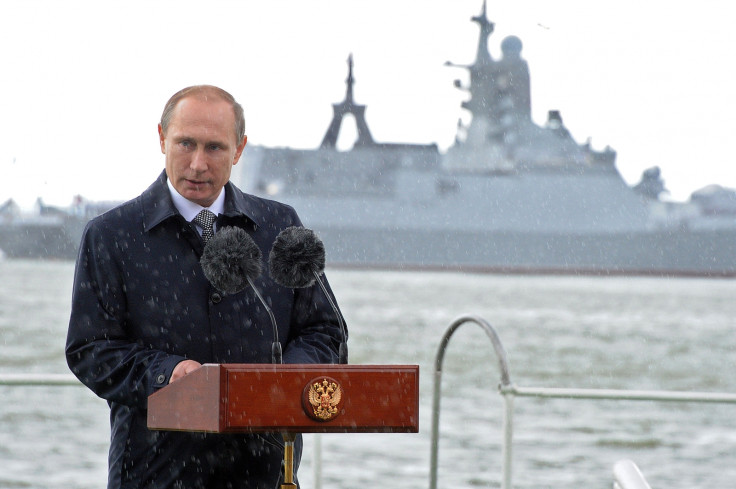Russia outlines plans to boost Arctic military presence in new naval doctrine

Russia outlined plans to strengthen its naval presence in the Arctic in response to Nato activity on its borders as part of its new naval doctrine.
A fleet of new icebreakers will be built to give the Russian navy unrestricted access to the Atlantic and Pacific, deputy prime minister Dmitry Rogozin said at a ceremony at the Baltiysk naval base in Kaliningrad.
"The main emphasis is in two directions – the Arctic and Atlantic", said Rogozin.
"The Atlantic emphasis is linked to the fact that recently there has been a quite active development of Nato and it has approached our borders. The Russian Federation will of course respond to that."
Putin approved the new doctrine with senior military officials on Sunday, July 26, before observing ceremonies to mark Russian Navy Day.
The new strategy, published on the Kremlin website, will also focus on strengthening Russia's naval presence in the Black Sea and Mediterranean.
The main emphasis is in two directions – the Arctic and Atlantic
The new doctrine comes amid deteriorating relations with the West, with a series of economic sanctions imposed on Russia in the wake of the Ukraine crisis, in which Russia seized the Crimea peninsula and the strategically vital naval base in Sevastopol.
The new doctrine outlines plans for "developing infrastructures for its Black Sea fleet".
It also calls for the "accelerated reconstitution and completion of strategic Russian positions" in the Black Sea.
The doctrine describes plans for "guaranteeing an adequate military naval presence for Russia in" the Atlantic region" and deploying a naval force in the Mediterranean in a "permanent manner".
In February, Nato announced plans for a 5,000-strong spearhead force, and a string of command centres in eastern Europe.
Russia has been strengthening its military presence in the Arctic in recent years, and in March undertook a series of military exercises in the region involving 80,000 troops, 220 aircraft, 41 ships and 15 submarines.
© Copyright IBTimes 2024. All rights reserved.






